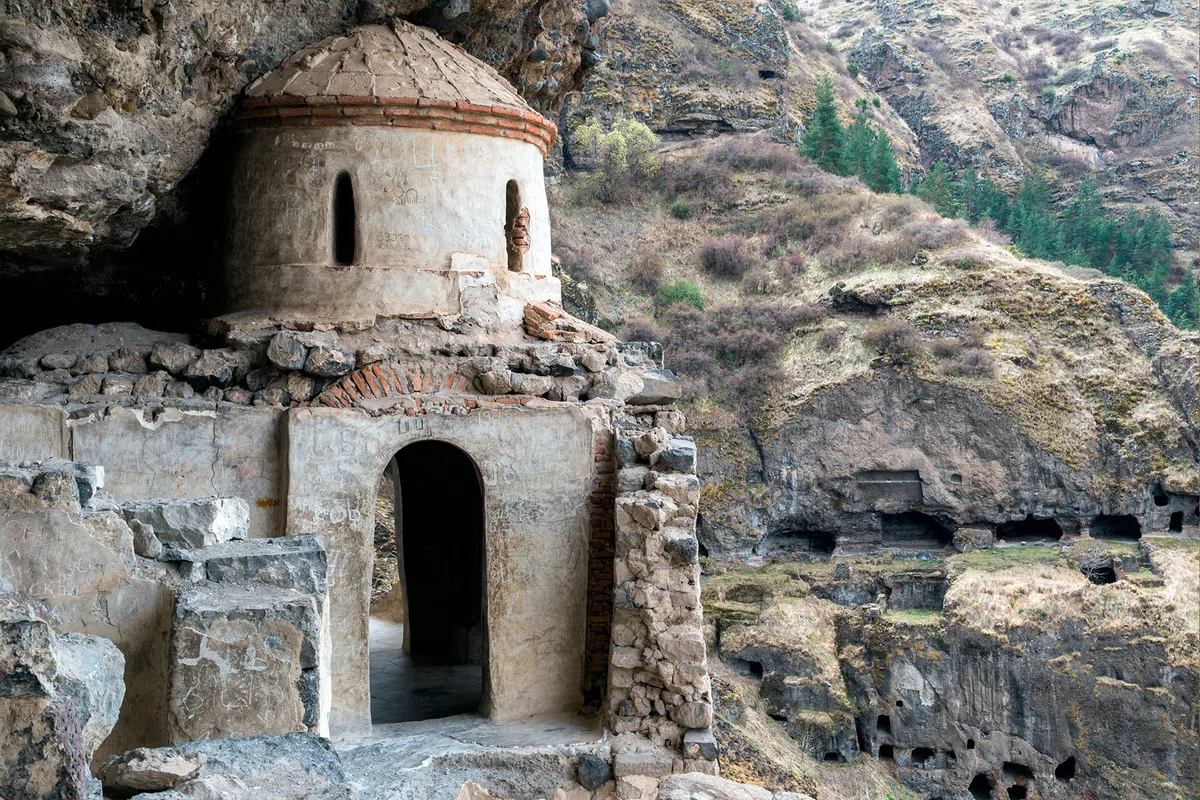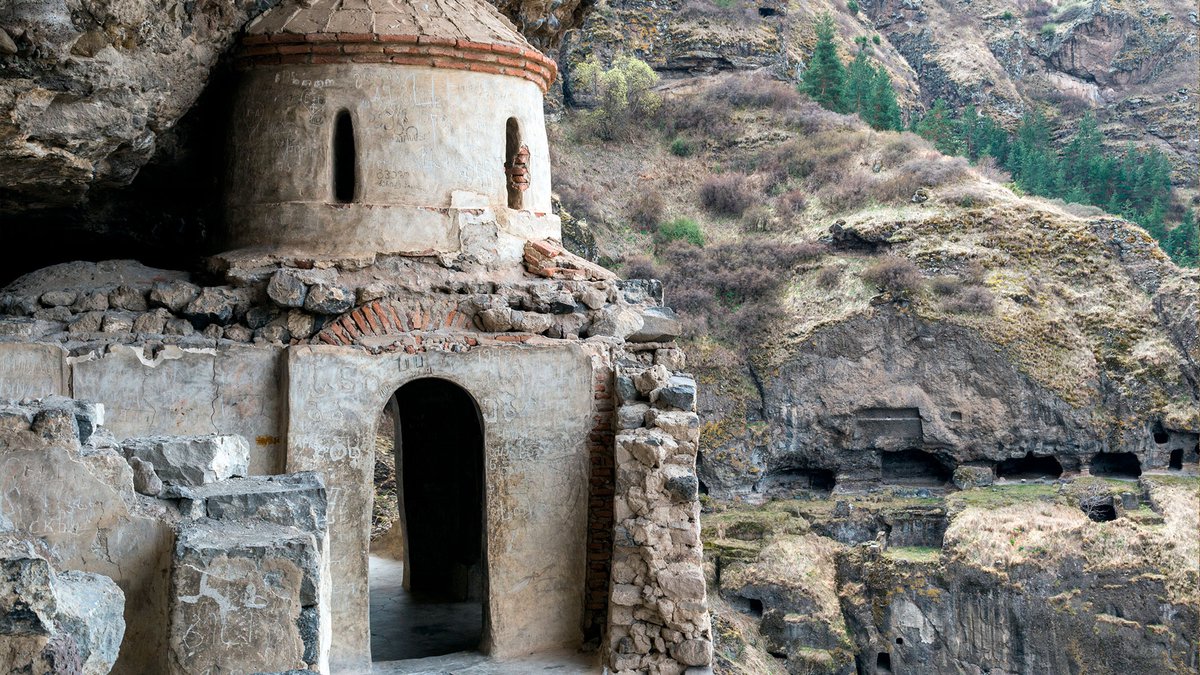
The most unusual monastery complexes in Georgia. Vakhanis Kvabebi Monastery complex.
Vakhanis Kvabebi is a monastery complex, which distinguishes it from the rest by the fact that it is carved into the rocks. In the center of the complex is the Church of St. George. Vakhanis Kvavebi includes two hundred caves carved into the walls. Many architectural monuments have been preserved to this day. On the last floor of the complex there is a fresco painting of the twelfth century.
Vakhanis Kvabebi (Vakhani cauldrons) is a monastery complex carved in the rocks (VIII-XVI centuries). The complex is located in Javakheti, 27 kilometers from Aspindza, on the right bank of the river. Chickens.
In the center of the complex stands the Church of St. George, the boilers-cells of which were carved in the IX-XI centuries. In 1089, an earthquake in Vani severely damaged the boilers. The owner of the monastery, Ichkit Gurgenisdze, began restoring these boilers in 1186-1191. He restored the Church of St. George and the ancestral gates located nearby, carved ktitor inscriptions at the entrance. In 1204 Anton Mtsignobartukhutsi- Chkondideli restored the limestone barrier. In 1204-1283, the monastery was ruled by the Eristavi of Javakheti - Tmogveli. They established a typicon for the monastery "The Charter of Vakhanis Kvabebi" (1204-1234), set up the gates for the church of St. St. George's, the bell tower, was built as a church of the hall type (1265-1283). In 1283, as a result of an earthquake, Vakhanis Kvabebi were destroyed again. In 1551 and in 1576 . Vakhanis Qabebi suffered invasions by Persians and Ottomans. After that, the monastery ceased to exist.
Vakhanis Kvavebi consist of 200 caves carved into the wall (cells, gates, tombs, shelters, communication tunnels, similar household treasures and used churches), located on 16 floors. The remains of the reservoir and 3 water supply routes have been preserved. As a result of archaeological excavations, 8 marani (wine storehouses), a crushing plant carved into the rock, and a ceramic workshop were discovered. According to experts, the construction and architectural experience gained during the construction of Vakhanis Kvabebi prepared the basis for the creation of a complex carved into the rock in Vardzia.
On the last floor of Vakhanis Kvabebi, frescoes of the XII-XIII centuries have been preserved, as well as historical inscriptions (XV century), including inscriptions made in the alphabet "mkhedruli", made by nuns (Gulkan and Anna Rcheulishvili, Tumian Gojishvili ...). They complain about the bitter fate. These women carved 2 stanzas from "The Knight in the Tiger Skin" on the wall.













42 comments
Log in to leave a comment
Судьба у здания монастыря трагичная. С такой радостью начала чтение и с каким сожалением закончила. Столько усилий вложено в восстановление после землятрясений и всё - таки добили здание, но огорчило то, что после нашествия османов и персов, монастырь полностью прекратил свое существование, никто больше не взялся за него. После раскопок много было обнаружено, что теперь напоминает о былом существовании монастыря.